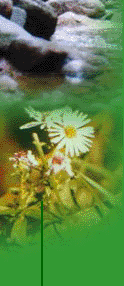|
Feeding Green Iguanas
If you own a green iguana, no doubt you've seen lots of information about what to feed your pet. Unfortunately, much of the information that is on the market is misleading. Green iguanas have fairly specific nutritional needs, and winging it can put your dear pet in danger of illness. In fact, many problems that veterinarians see in exotic pets are caused by poor at-home care, including poor nutrition.
If you do not already have one, find your pet a veterinarian who treats iguanas. Not all veterinarians do, so it may take some work on your part. But it's well worth it.
Iguanas in the wild are strict herbivores. They tend to eat many small meals throughout the day, and their natural eating habits lean toward a diet of fiber and plant protein, with very little fat.
When choosing food for your iguana, it's important to select different kinds of plant-based food in the right proportions: 90 percent should be vegetables and 10 percent fruits. While iguanas do enjoy the sweeter fruit choices, fruit doesn't have the same mineral and vitamin content as vegetables. To avoid getting your pet hooked on just a few foods, be sure to feed a wide selection of appropriate foods in the right proportions. In these cases, fresh foods are best, with frozen coming in second and canned coming in last.
Here is a list of some appropriate vegetables to feed your iguana. It's best to serve them raw; just be sure to wash them well.
Dandelion greens (unsprayed, if from your yard)
Collard and mustard greens
Turnip tops and greens
Green beans and peas
Timothy hay
Swiss chard
Clover
Kale
Shredded squash
Shredded carrots
The following flowers are also OK for your pet. Be sure they have not been treated with chemicals or fertilizers.
Dandelion flowers
Carnations
Hibiscus
Roses
(Avoid azaleas because they are toxic!)
Appropriate fruit selections include:
Apples
Bananas
Grapes
Peaches
Pears
Melons
|




